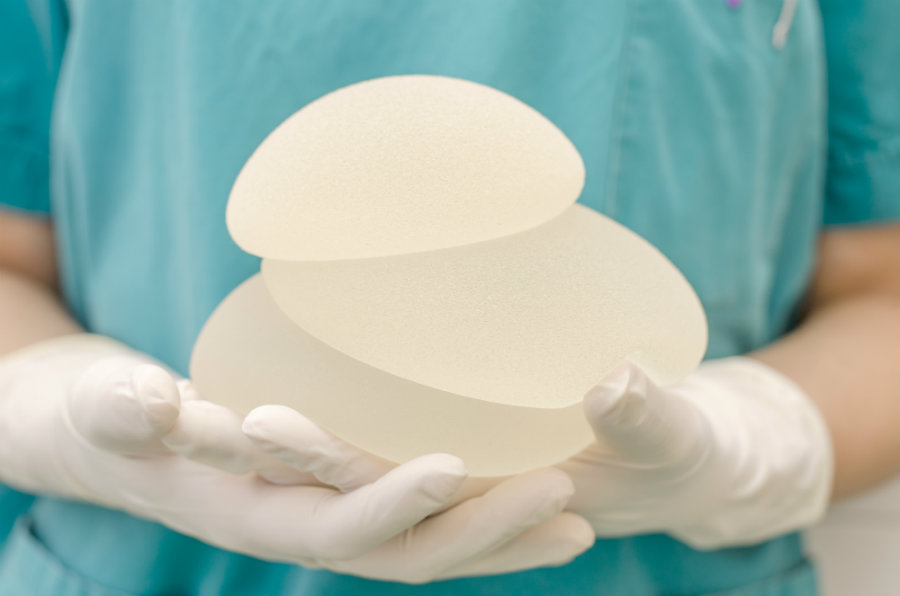The United States Food and Drug Administration (FDA) has found a link between breast implant and a rare type of cancer, that could be the cause of nine deaths in the U.S.
The anaplastic large cell lymphoma (ALCL) is not a type of breast cancer but a kind of cancer itself. It can be found in the skin or lymph nodes, and around the breast implant, and affects the immune system cells. According to the Plastic Surgery Foundation and the American Society of Plastic Surgeons, breast implant-associated anaplastic large cell lymphoma (BIA-ALCL) is a distinct type of ALCL that covers the capsule surrounding a breast implant. It usually occurs around eight years after implantation.

World Health Organization (WHO) researchers discovered in 2016 that BIA-ALCL usually stays in the breast implant area, but can also spread to other parts of the body.
The FDA has received 359 cases of ALCL this year that could be linked to breast implants. Although these women had among textured, smooth, and silicone gel-filled implants, the type of implant does not seem to make a difference. However, the FDA considers that smooth implants are less likely to cause ALCL.
“All of the information to date suggests that women with breast implants have a very low but increased risk of developing ALCL compared to women who do not have breast implants,” said the FDA, according to Techtimes.
The FDA discovered the association between ALCL and breast implants in 2011, but they were unable to determine all the factors that increase the risks of having the disease.
Since 2011, they have been studying this rare type of cancer and its link to breast implants. In 2016, the WHO recognized BIA-ALCL as a rare T-cell lymphoma that can develop following breast implants.

Other advances were achieved in 2016, like the release of information about this disease by the Plastic Surgery Foundation. The French National Agency for Medicines and Health Products Safety (ANSM) asked breast implants manufacturers to develop biocompatibility testing and to report their results within a year to the agency.
The FDA says that it is impossible to know the exact number of women with BIA-ALCL because there are so many limitations in implant sales data worldwide, but they say that about 11 million women in the world have breast implants, which can lead to the number of women with the disease.
The Plastic Surgery Foundation says that less than ten patients are diagnosed per year with BIA-ALCL, estimating an incidence of 1 in 300,000. They also said that MD Anderson Cancer Center recognizes only 160 cases worldwide of pathologically confirmed BIA-ALCL.
Smooth vs. textured
Although the link between the implant type and the risk of developing BIA-ALCL is not yet confirmed, some researchers say that textured implants are more likely to be associated with the disease.
Dr. Alez K. Wong, a plastic surgeon, and researcher at the University of Southern California’s Keck School of Medicine said to The New York Times that he has been studying this phenomenon in his laboratory to discover different levels of genetic activity in animals’ tissues in response to smooth versus textured implants.

He said that textured implants are used when doctors need to stick the implant and not move. In fact, he said that when the textured implant is removed, it makes a peeling sound, as if it is torn off.
“Whereas with a smooth implant, it’s like Jell-O. You can spit in it around. It moves really easily,” he said.
Nevertheless, he is still studying why the implant surface could be related to cancer development.
Patients with breast implants
The FDA has developed some recommendations for doctors and patients. It says that doctors need to know that the textured breast implant seems to be more prone to cause the disease, so they need to provide patients with all the information about the types of implants, their benefits and their risks, in order to make the best election.
The FDA says that patients with breast implants don’t need to change their routine at all and there is no reason to remove implants if there is no problem with them. Although they need to follow some recommendations like monitoring their breast implants, and if any change is noticed they have to contact a health professional. Patients with gel-filled breast implants also need to get periodic magnetic resonance imaging to detect possible implant ruptures.
Once BIA-ALCL is diagnosed, the Plastic Surgery Foundation recommends to remove the implants and a total capsulectomy to extract any mass associated with the capsule. The implant, capsule, and effusion should be sent to pathology for an evaluation. They say that this chirurgical process should be enough to eliminate cancer, they also say that chemotherapy treatment has not been evaluated yet in this kind of patients, so doctors don’t use any other adjunctive treatment.
Source: FDA
